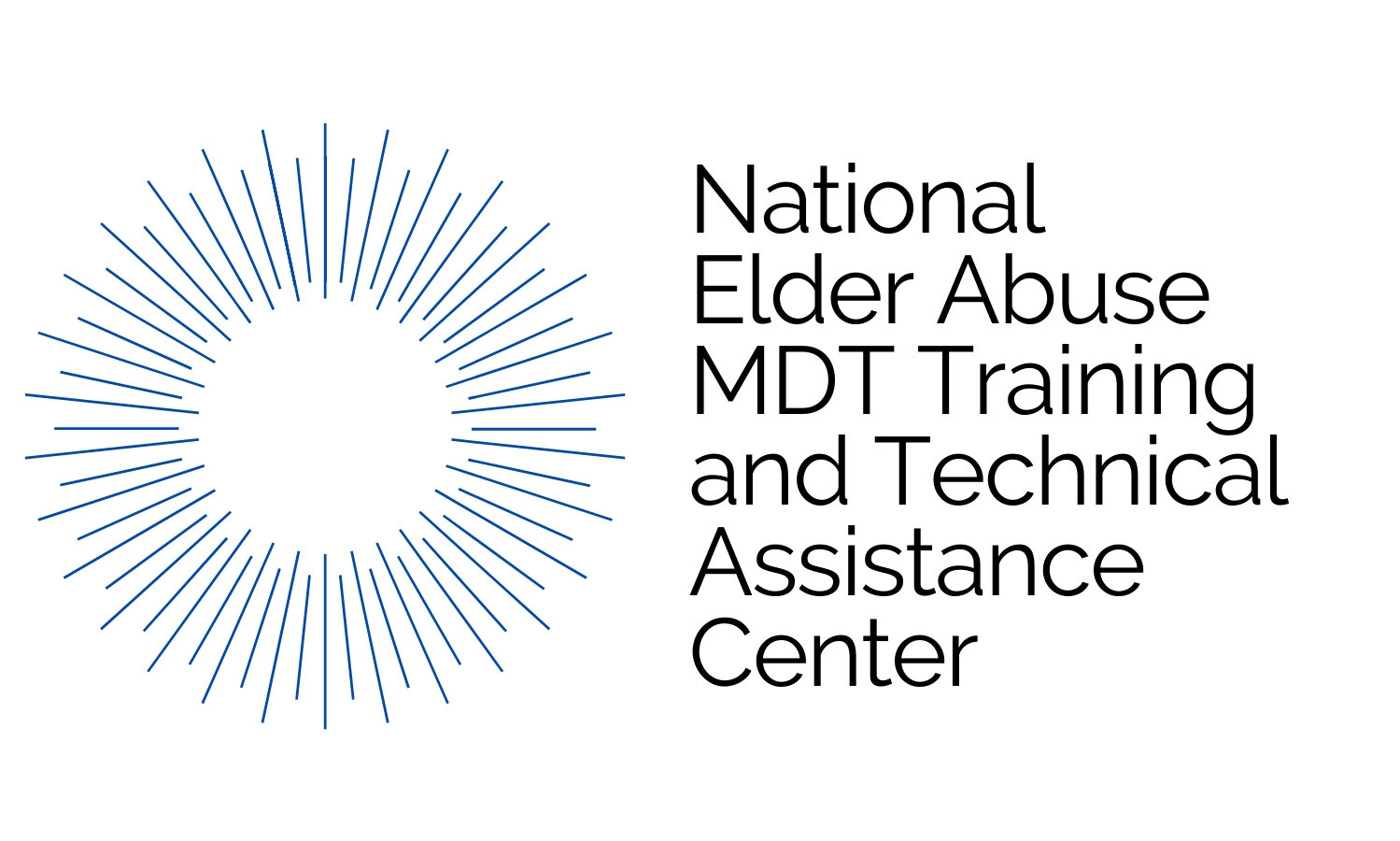History & Context
Elder Abuse Enhanced Multidisciplinary Teams (E-MDTs) are collaborative groups composed of professionals from different fields who work together to address and prevent elder abuse. Multidisciplinary responses to elder abuse took hold in the 1950s and 1960s with growing focus on the need for multi-intervention “protective care” of frail, isolated and incapacitated older persons with no family support. A resurgence emerged in the 1970s with growing attention to the role of medical and criminal justice systems in addressing elder abuse. By the 1980s, this shift, together with some high-profile elder abuse cases in the media, and a growing awareness of elder abuse as a serious social problem, gave rise to more formalized interdisciplinary teams to address elder abuse.
The earliest elder abuse MDTs were typically composed of representatives from law enforcement, social services, adult protective services, and medical professionals, who worked together to investigate and intervene in elder abuse cases. These teams often functioned as a central coordinating point for multiple agencies and organizations caring for older adults.
Over time, the scope of the elder abuse MDTs expanded to include additional disciplines, such as mental health professionals, legal experts, financial institutions, and forensic accountants, to comprise what is now known as enhanced multidisciplinary teams (E-MDTs). Many states and localities have established elder abuse E-MDTs as a formalized response to elder abuse with dedicated funding and resources to support their work, with some codifying these responses into law.
Overall, the history of elder abuse E-MDTs reflects a growing recognition of the importance of collaboration and a multidisciplinary approach in addressing complex social problems. Elder abuse E-MDTs are recognized as a best practice in responding to elder abuse cases. Research indicates that E-MDTs have improved the investigation and prosecution of elder abuse cases, increased access to services for victims, and promoted collaboration and coordination among professionals who work with older adults.
Here are some helpful links that trace the history and efficacy of E-MDTs:
- Anetzberger, Georgia J. The evolution of a Multidisciplinary Response to Elder Abuse
- Teaster, Pamela and Nerenberg, Lisa. A National Look at Elder Abuse Multidisciplinary Teams
- Breckman, Risa, Callahan, Jean & Solomon, Joy. Elder Abuse MDTs – Planning for the Future
- Wilbur, Kate et al. Elder Abuse MDT Forensic Center model
- Department of Justice. Elder Justice Initiative Introduction to Multidisciplinary Teams
References:
- Anetzberger, Georgia J. (2011) "The Evolution of a Multidisciplinary Response to Elder Abuse," Marquette Elder's Advisor: Vol. 13: Iss. 1, Article 1.
- Elder Justice Initiative / Department of Justice (2016). Developing an Elder Abuse Case Review Multidisciplinary Team in Your Community. https://www.justice.gov/elderjustice/mdt-toolkit
- New York State Enhanced Multidisciplinary Team Initiative (2023, June 1). History & Timeline. https://www.nysemdt.org/timeline
quick links
National publications on E-MDTs
Here are some national publications on elder abuse multidisciplinary teams that provide guidance on E-MDT research and best practices.
